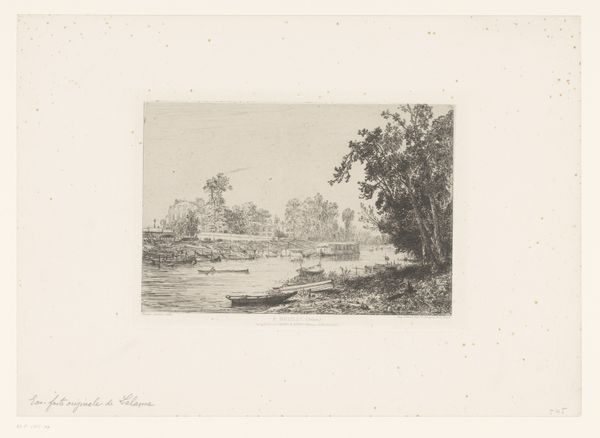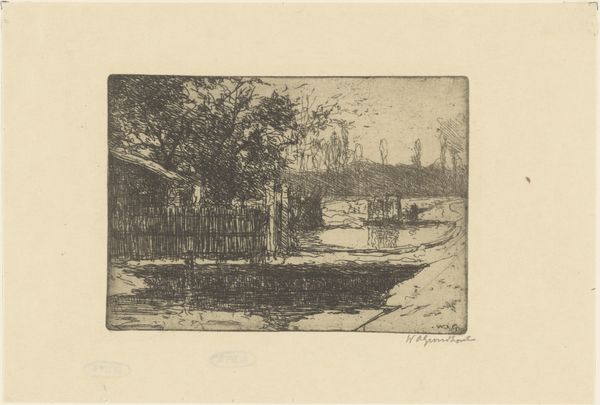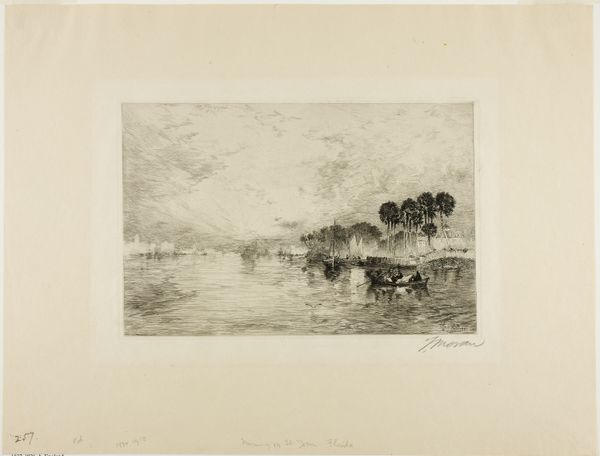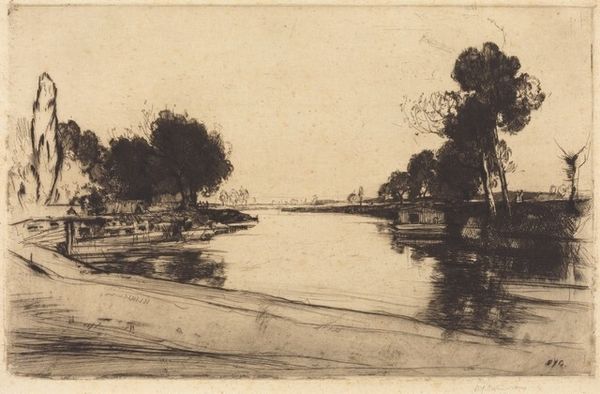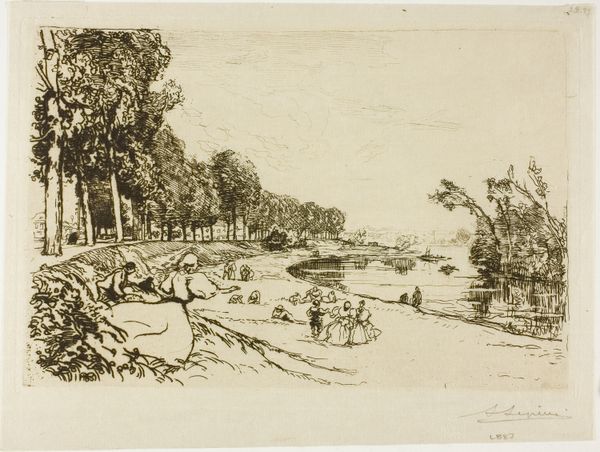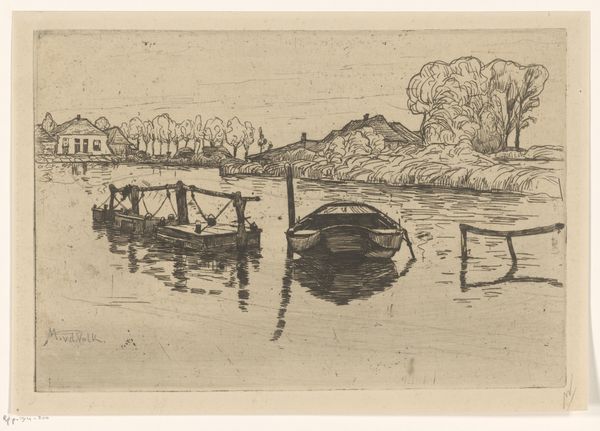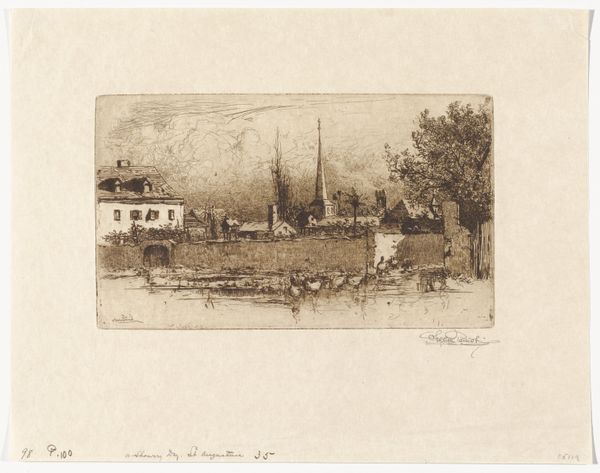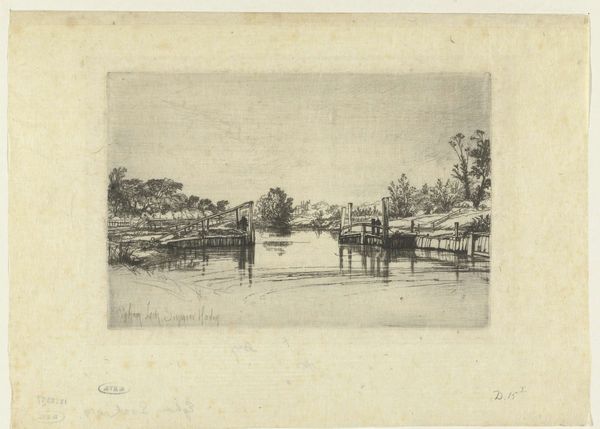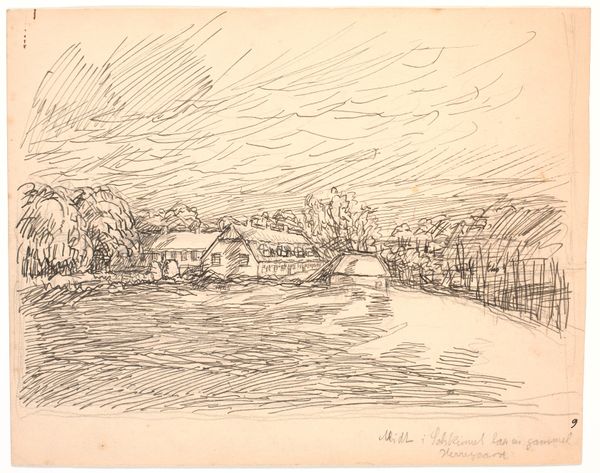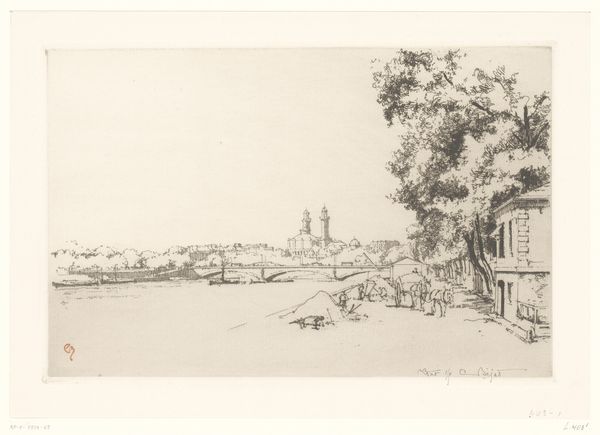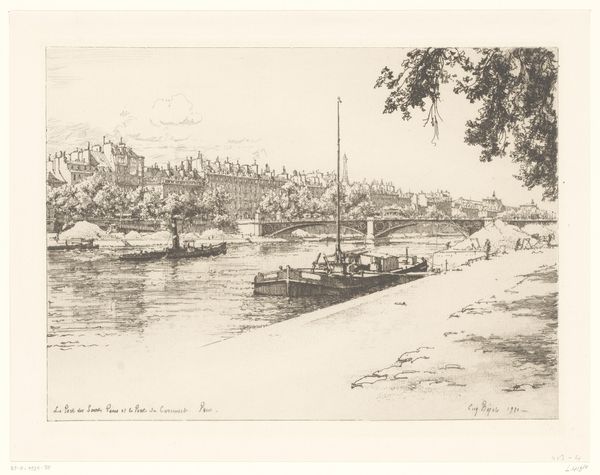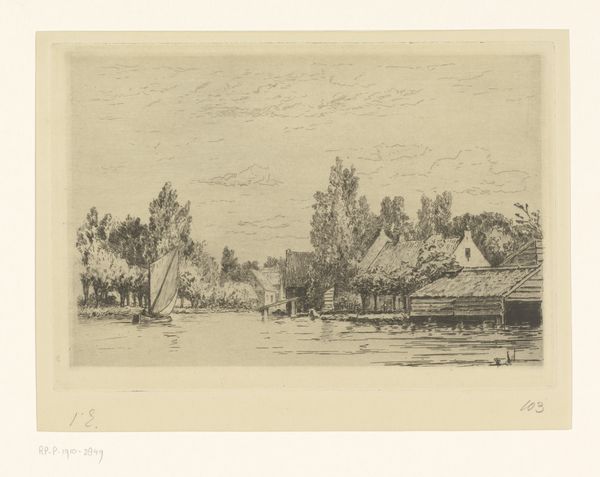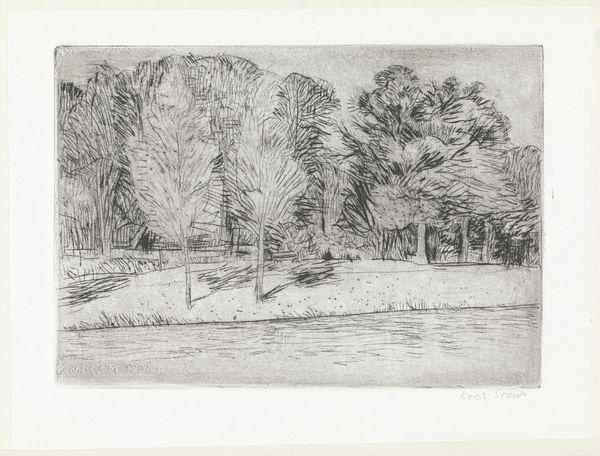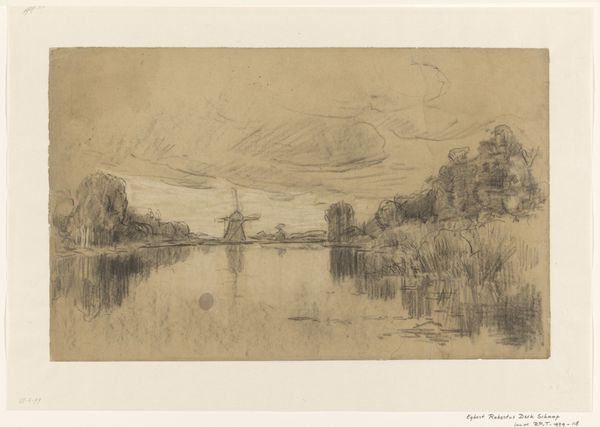
Dimensions: height 168 mm, width 206 mm
Copyright: Rijks Museum: Open Domain
Curator: Eugène Bejot's "De haven van Saint Paul in Parijs," from 1905, offers us a glimpse into the Parisian cityscape through the medium of etching, with ink on paper. Editor: It’s like a faded memory, a snapshot in time captured in sepia tones. You can almost smell the river and hear the gentle lapping of the water against the docks. It has a melancholic, almost dreamy quality, don’t you think? Curator: Indeed. Bejot, often working outside academic circles, captured a rapidly changing Paris. The port was then still bustling, and his focus wasn't just on aesthetics but on documenting daily life, which makes it a document of sorts of urban existence at the turn of the century. Editor: It's the reflections that get me, the way the light dances on the water, blurring the line between reality and its mirror image. The trees seem to lean in, gossiping about the day's events, while the bridge stands as a stoic witness to it all. Did people flock to see this port the way tourists flock to the Seine now? Curator: Actually, similar attractions existed then as now. Scenes of urban life were important for middle-class patrons, reflecting and shaping a shared visual experience of their city. Prints such as these were accessible and democratic ways of displaying knowledge of Paris. Bejot created not only impressions but also identities. Editor: And identities steeped in light and shadow. It’s interesting that he chose such a detailed style for what must have been such a chaotic, changing world. Do you think that was deliberate, trying to create a still-life quality? Curator: Possibly. Etchings offer the artist controlled detail but also allow for nuances in tonality and line quality. Also, recall the context; Impressionism had gained considerable influence, prompting explorations like Bejot's, blending realistic observation with subjective rendering. Editor: It seems to reflect a real yearning to fix what will be eventually swept away by the river and the ever-turning tides of progress. Curator: Exactly! "De haven van Saint Paul in Parijs" serves not only as art, but as a piece of historical reflection. It invites consideration of the ephemeral qualities of the industrialising urban environment. Editor: And a very romantic meditation, I'd add. Thank you for letting me muse with you today, I'm off to find a new daydream!
Comments
No comments
Be the first to comment and join the conversation on the ultimate creative platform.
